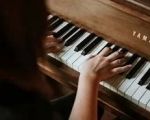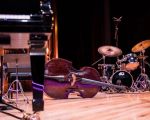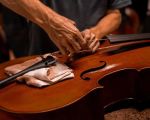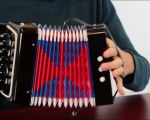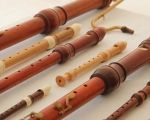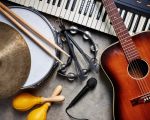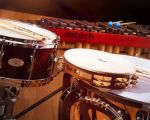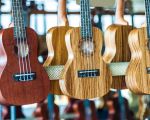- 1-Core-Rhythm-Section
- 2-Lead-Instruments-and-Solos
- 3-Harmonic-Instruments
- 4-Percussion-and-Footwork
- 5-Vocal-Accompaniment-Elements
- 6-Evolution-of-Blues-Instrumentation
- 7-Iconic-Blues-Bands-and-Lineups
- 8-Learning-and-Gear-Resources
1. Core Rhythm Section
At the heart of virtually every blues ensemble lies the rhythm section, anchoring groove and tempo. Traditional what instruments are in blues music always include bass and guitar—most often upright or electric bass paired with a hollow-body electric guitar. The bass guitar locks in with the drummer’s kick drum to propel the shuffle or swing feel. In small combos, guitarists often double rhythm duties and might alternate between steady chord “comping” and melodic fills. This foundational pairing creates the pocket that allows soloists to stretch out over each 12-bar progression.
1.1 Bass Styles
In Delta blues and early Chicago blues, upright bass with a simple walking line sets a steady pulse. Modern blues bands favor electric bass, offering more attack and punch through distortion or overdrive.
1.2 Guitar Rhythms
Rhythm guitar in blues uses alternating bass notes and chord stabs—known as the “boom-chick” technique—to simulate a fuller band on acoustic instruments.
2. Lead Instruments and Solos
While the rhythm section holds the groove, lead instruments inject emotion through solos and melodic interludes. Electric guitar dominates here, with players bending strings, using vibrato arms, and employing overdrive pedals to shape a searing tone. Slide guitar—a hallmark of Delta blues—adds vocal-like cries via glass or metal slides producing microtonal pitch shifts. Saxophone and trumpet also appear in larger blues-rock or jump-blues outfits, adding brassy counterpoints to guitar solos.
2.1 Harmonica as Lead Voice
The harmonica, or “blues harp,” often takes solo turns with rich overblow techniques. Its portability made it a favored lead for solo blues musicians busking on street corners.
3. Harmonic Instruments
Beyond guitar, keyboards add depth and color. Piano in boogie-woogie style drives fast-paced club blues with rolling left-hand bass lines and improvised right-hand riffs. The Hammond B3 organ emerged in 1960s soul-blues, providing sustained pads and percussive stabs. Some modern trios forgo keyboards, but when present, these harmonic instruments fill out midrange frequencies and offer dynamic backup chords under solos.
3.1 Piano Styles
Barrelhouse piano uses aggressive attack and syncopated rhythms, whereas quieter barrelhouse or gospel-blues piano emphasizes chordal support and call-and-response licks.
4. Percussion and Footwork
Drums in blues are deceptively simple yet require subtlety. A standard kit—snare, bass drum, hi-hat, and a crash or ride cymbal—uses brushes or rods to coax gentle shuffles or tight backbeats. In earliest rural blues, players strapped wooden washboards or foot tambourines to add percussive texture. Today’s roots acts occasionally revive these traditions with stomping boards and foot tambourines to maintain an authentic, raw feel.
4.1 Shuffle vs. Straight Time
Shuffle rhythms divide each beat into a long-short triplet feel; straight time delivers even subdivisions. Mastering both feels is crucial to capturing traditional vs. modern blues grooves.
5. Vocal Accompaniment Elements
Vocals in blues are as much an instrument as the guitar. Lead singers use growls, slides, and falsetto runs to convey emotion. Backing vocals or call-and-response choruses—often delivered by two or three harmony singers—provide another layer, especially in gospel-inflected blues. Percussive mouth sounds or stomping feet can even serve as supplementary rhythmic instruments in acoustic settings.
5.1 Microphone Techniques for Blues Vocals
Singers often cup vintage ribbon mics to emphasize midrange warmth and natural distortion, enhancing the gritty timbre essential to authentic blues expression.
6. Evolution of Blues Instrumentation
Blues instrumentation has evolved from solo jug bands—featuring jug, washboard, and kazoo—to electrified Chicago ensembles powered by amplified guitar, bass, and drums. Post-war innovation introduced electric lap steel guitars and saxophones, while British blues-rock in the 1960s added full horn sections. Today, fusion genres blend blues with rock, jazz, or funk, sometimes incorporating synthesizers, wah-wah pedals, or even digital loops, expanding the palette beyond traditional what instruments are in blues music.
6.1 Technological Impact
Amplification allowed subtle acoustic instruments to compete with drums. Effects like delay and chorus broaden tonal options, inspiring new improvisational approaches.
7. Iconic Blues Bands and Their Lineups
Examining legendary groups clarifies standard instrument roles. Muddy Waters’s band (guitar, harmonica, piano, bass, drums) defined Chicago blues. The Paul Butterfield Blues Band added two saxophones, blending blues with jazz horn charts. Stevie Ray Vaughan’s power trio format—guitar, bass, drums—showcases how minimal lineups still achieve monumental sound.
7.1 Case Example: John Lee Hooker
Hooker’s early recordings often featured only his electric guitar and stomp box, proving that even a duo can deliver profound blues expression.
8. Learning and Gear Resources
To explore further what instruments are in blues music and find quality gear—harmonicas, vintage-style microphones, and slide guitars—visit Beat Trigger. Their curated collections and instructional workshops help aspiring musicians select authentic blues instruments and master traditional techniques.
